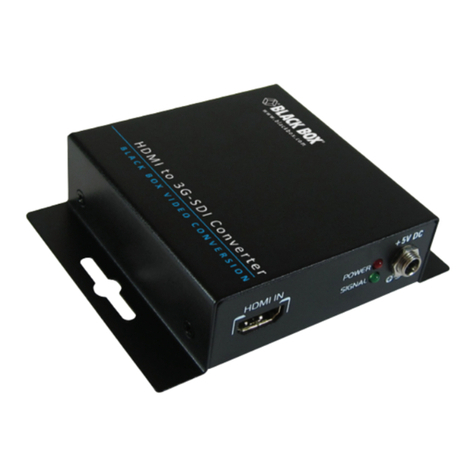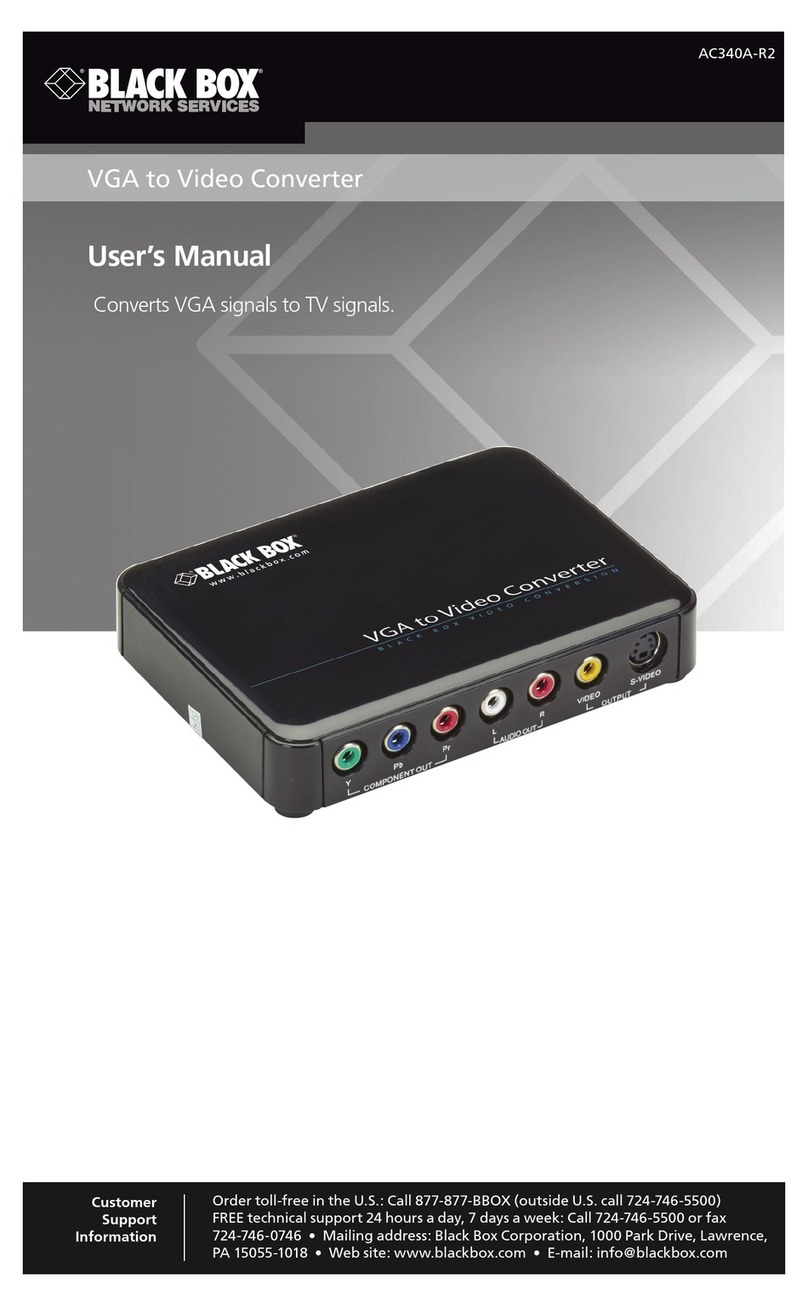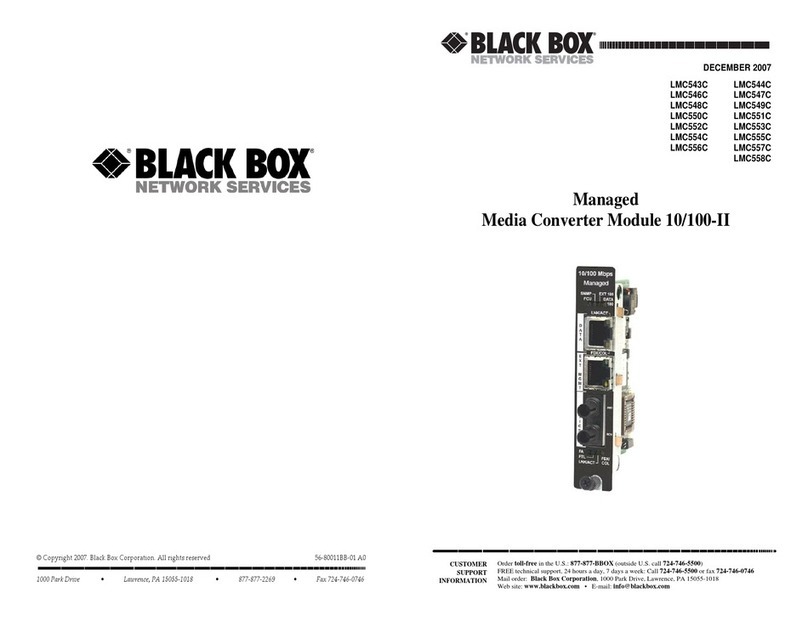Black Box ACX1MT-VDHID-C User manual
Other Black Box Media Converter manuals
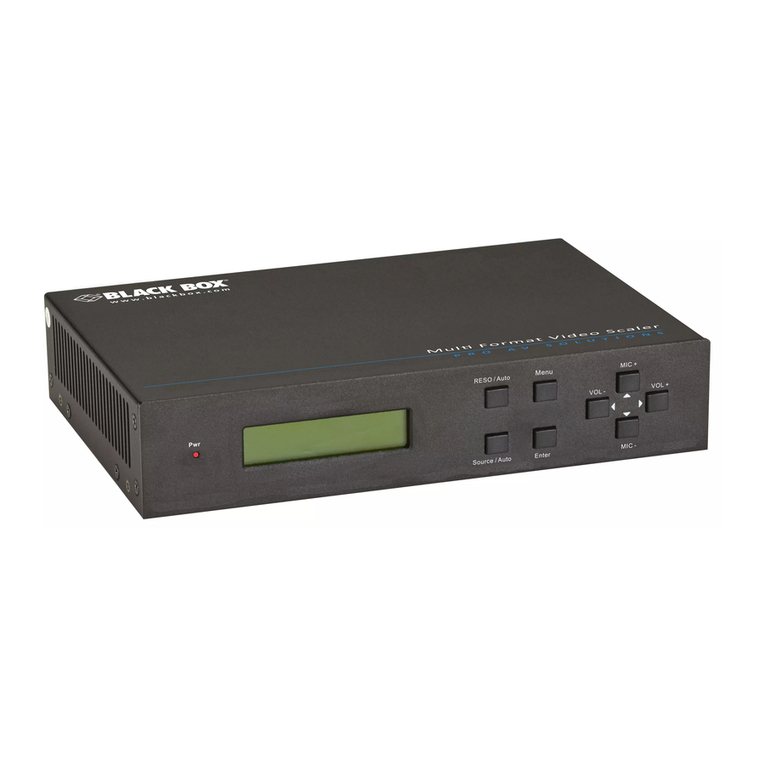
Black Box
Black Box AVS-5DA1-HDB User manual

Black Box
Black Box AC135A-R2 User manual
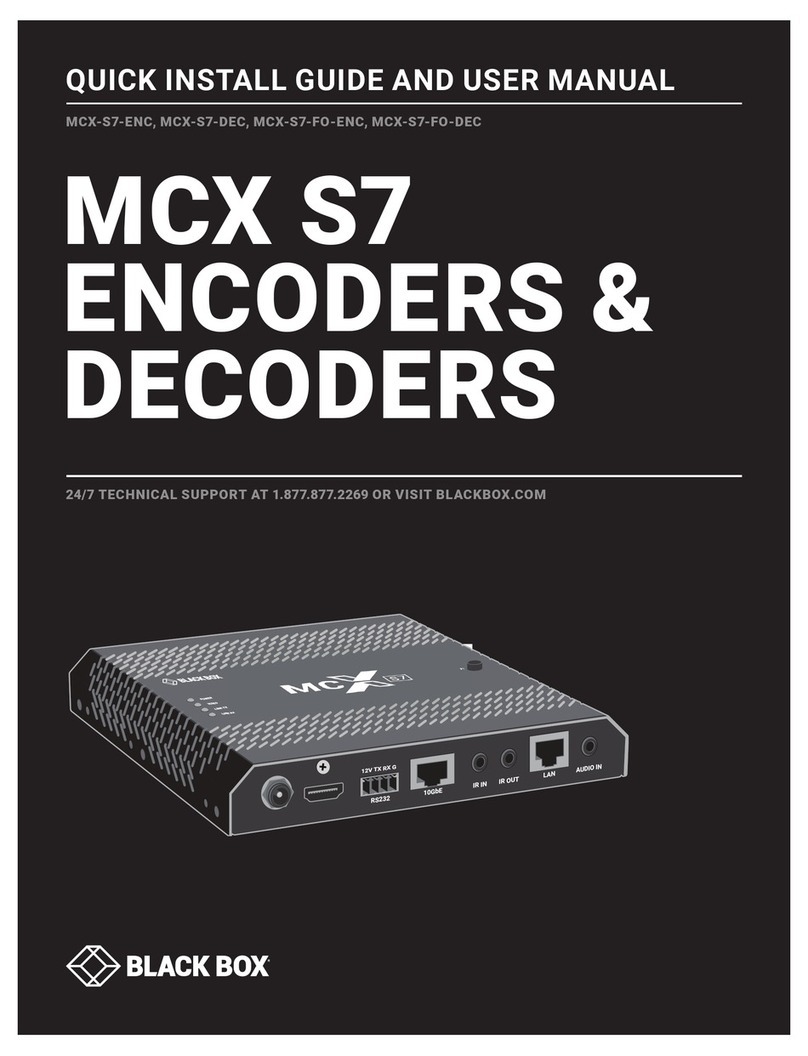
Black Box
Black Box MCX S7 Series Instructions for use
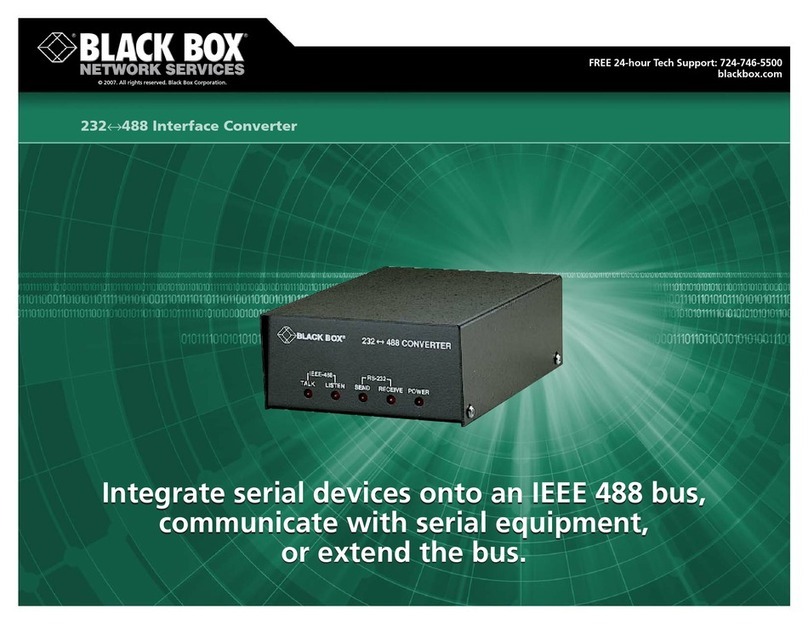
Black Box
Black Box 232<->488 Converter IC026A-R3 User manual

Black Box
Black Box AC076A User manual
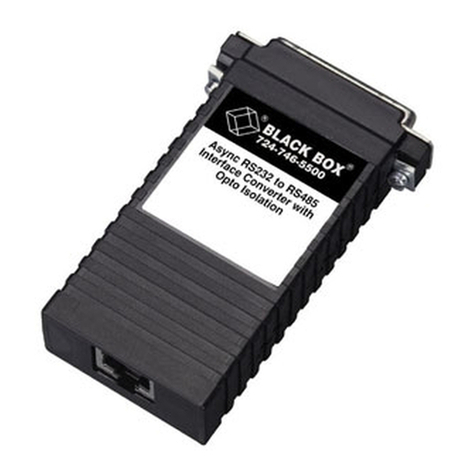
Black Box
Black Box IC520A-F User manual

Black Box
Black Box 488 Controller User manual
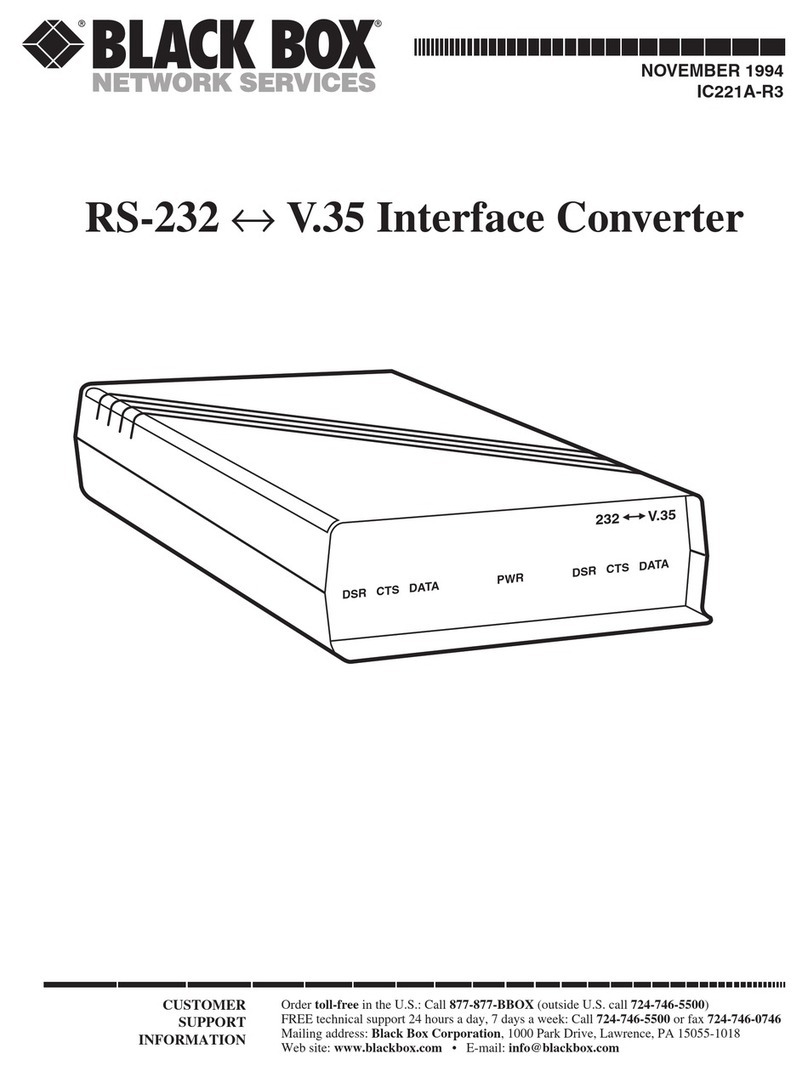
Black Box
Black Box USB Director RS-232 User manual

Black Box
Black Box LMC3004A User manual

Black Box
Black Box LGC320A-NPS User manual
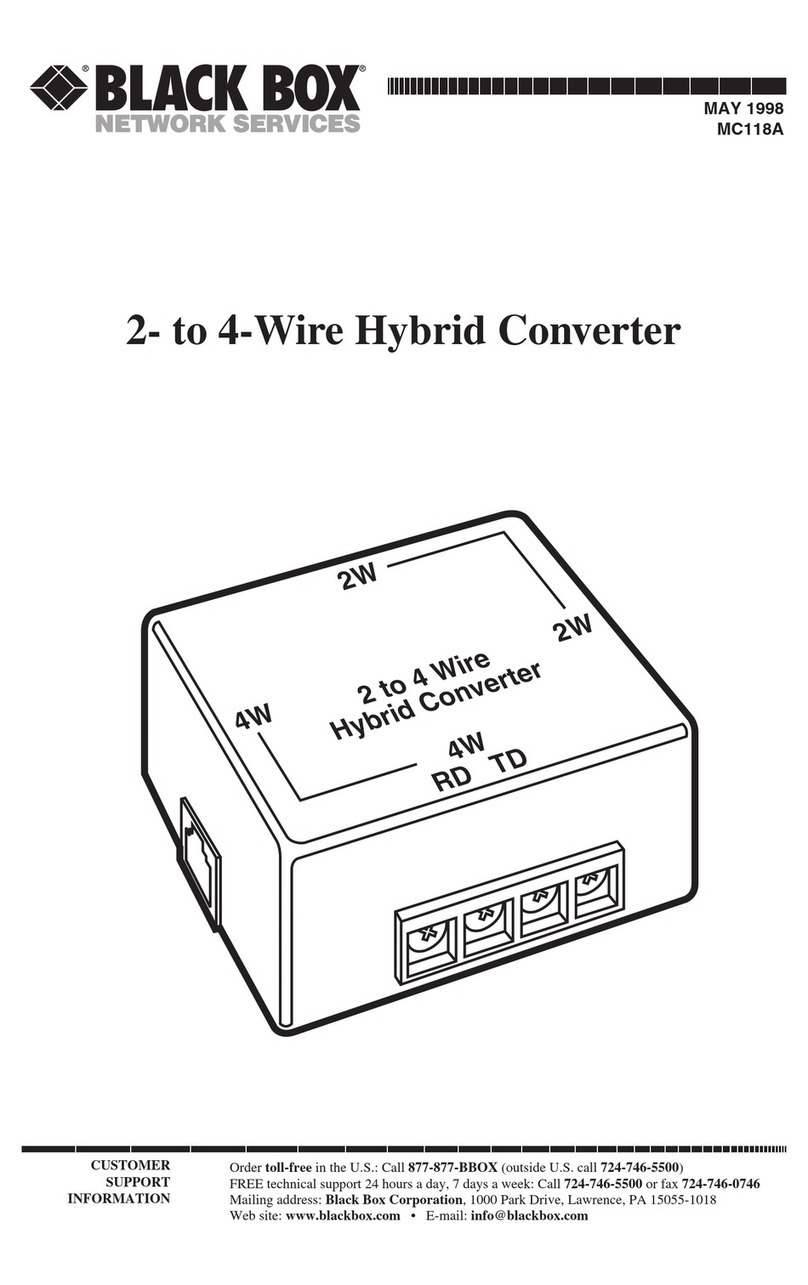
Black Box
Black Box 2- to 4-Wire Hybrid Converter User manual
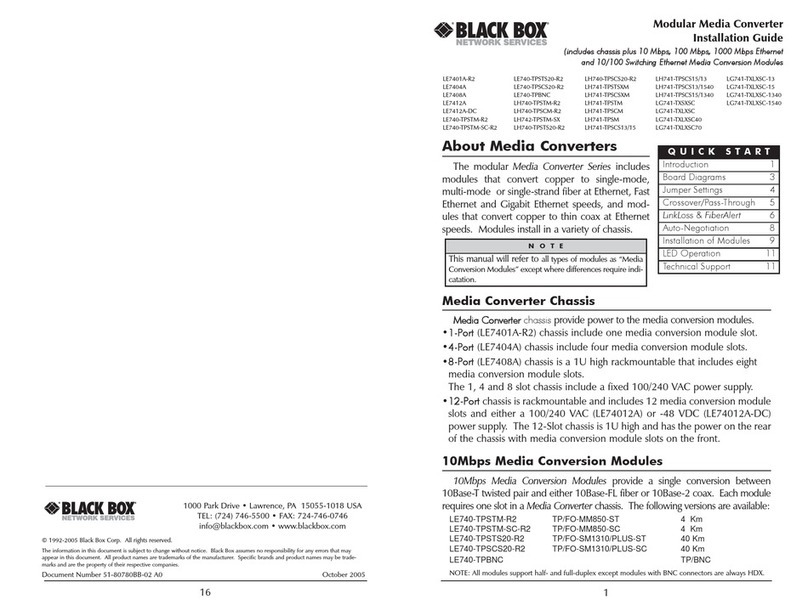
Black Box
Black Box LE7401A-R2 User manual
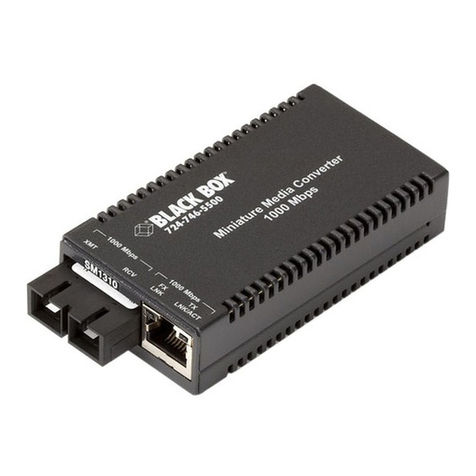
Black Box
Black Box LGC010A User manual

Black Box
Black Box LPD401A User manual
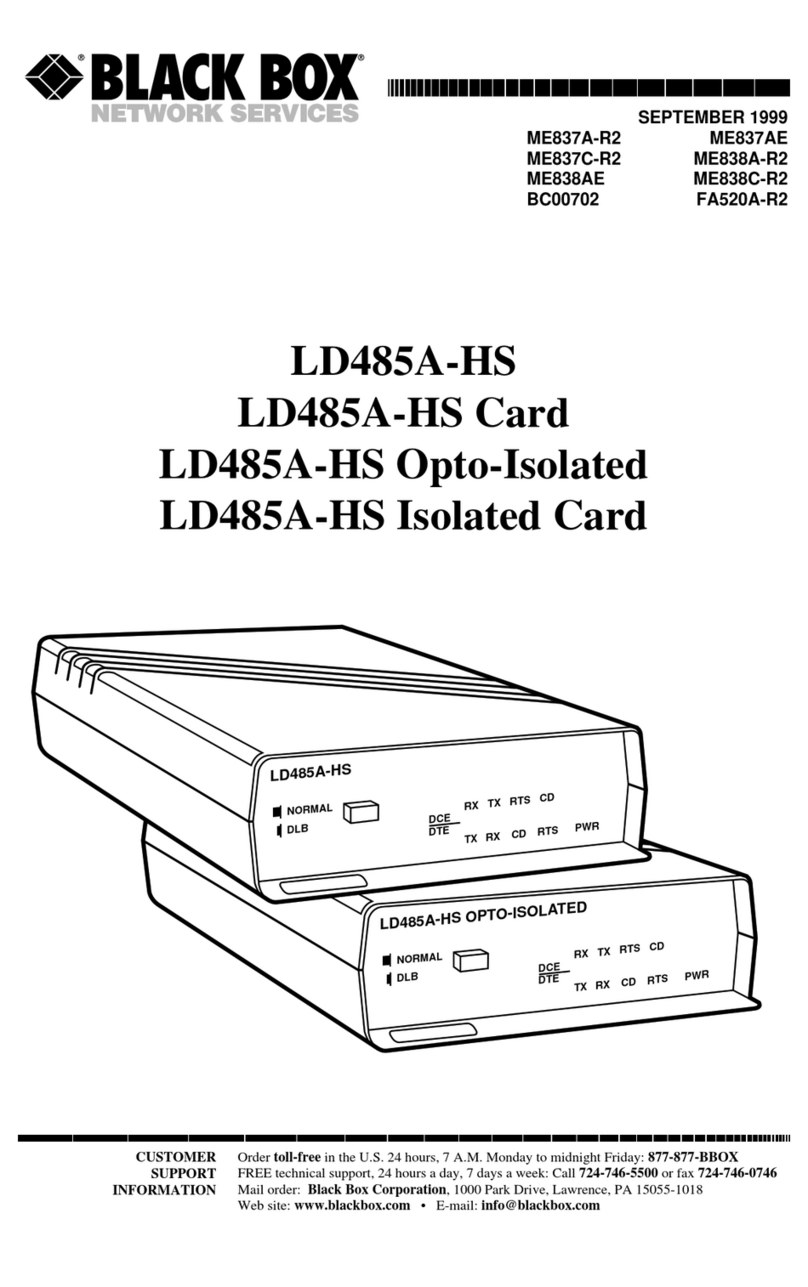
Black Box
Black Box LD485A-HS User manual
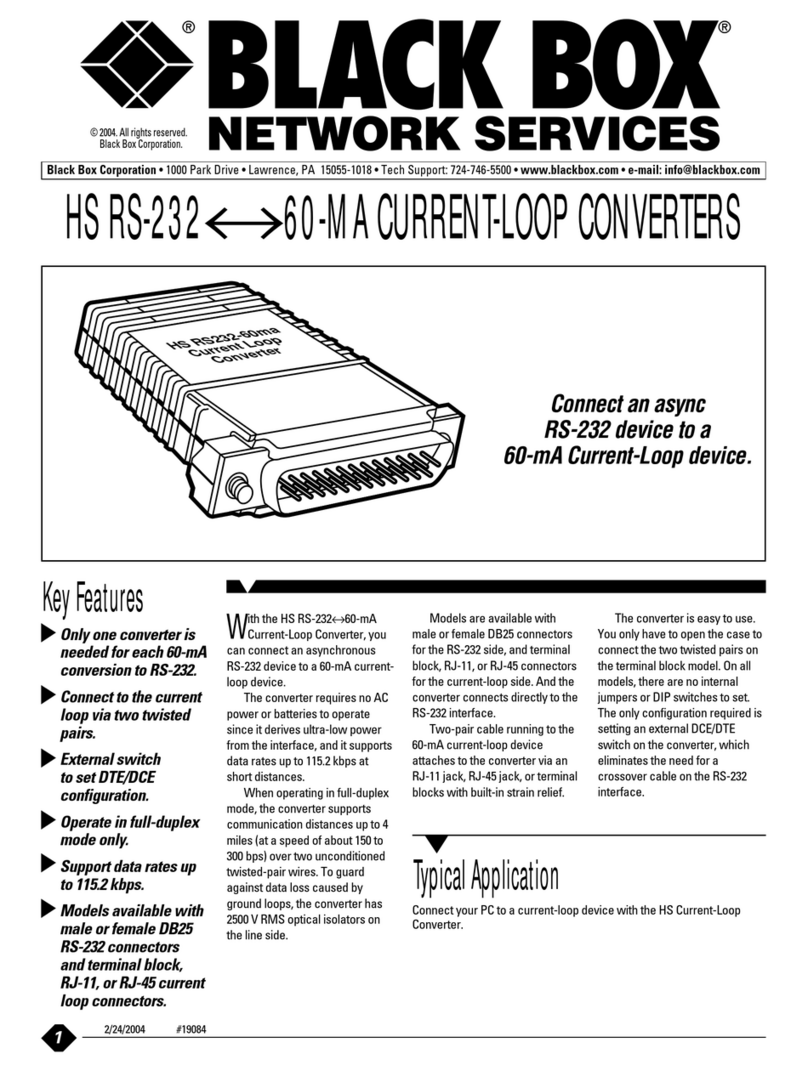
Black Box
Black Box CL080A-F User manual
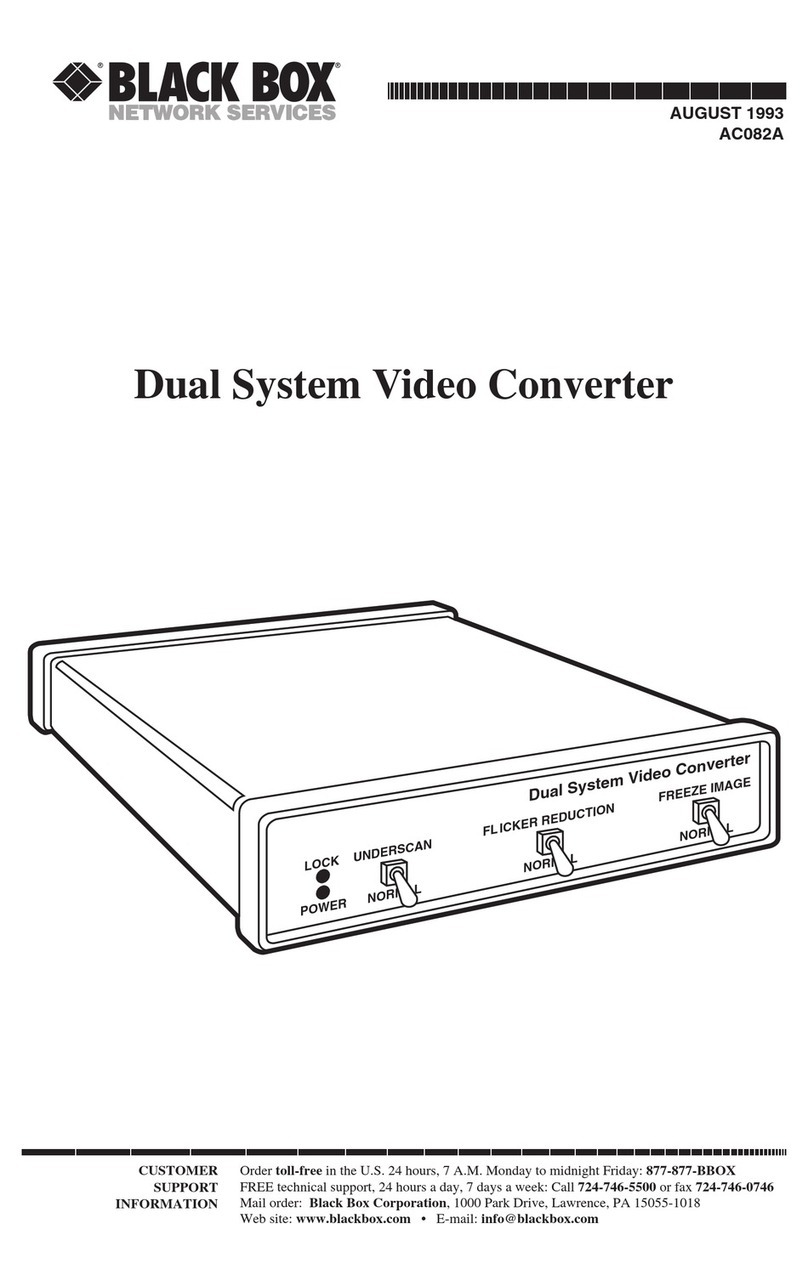
Black Box
Black Box AC082A User manual
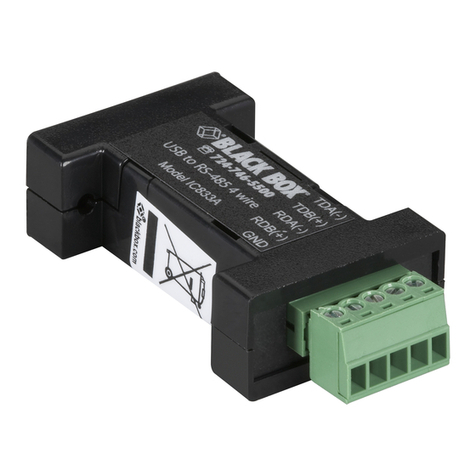
Black Box
Black Box IC832A User manual
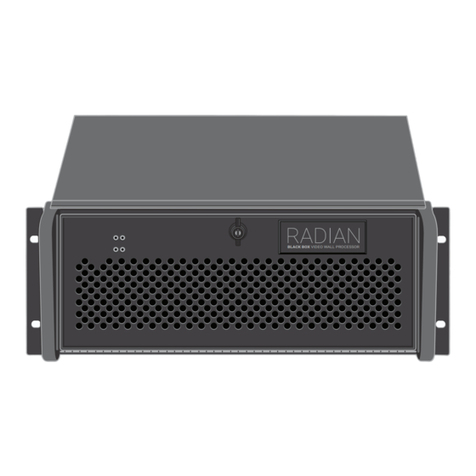
Black Box
Black Box Radian Flex VWP-1182 Series User manual

Black Box
Black Box IC485A-R2 User manual
Popular Media Converter manuals by other brands

H&B
H&B TX-100 Installation and instruction manual

Bolin Technology
Bolin Technology D Series user manual

IFM Electronic
IFM Electronic Efector 400 RN30 Series Device manual

GRASS VALLEY
GRASS VALLEY KUDOSPRO ULC2000 user manual

Linear Technology
Linear Technology DC1523A Demo Manual

Lika
Lika ROTAPULS I28 Series quick start guide

Weidmuller
Weidmuller IE-MC-VL Series Hardware installation guide

Optical Systems Design
Optical Systems Design OSD2139 Series Operator's manual

Tema Telecomunicazioni
Tema Telecomunicazioni AD615/S product manual

KTI Networks
KTI Networks KGC-352 Series installation guide

Gira
Gira 0588 Series operating instructions

Lika
Lika SFA-5000-FD user guide




